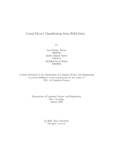| dc.contributor.advisor | Zavid Parvez, Mohammad | |
| dc.contributor.author | Newaz, Syed Mishar | |
| dc.contributor.author | Taseeb, Taslim Ahmed | |
| dc.contributor.author | Haque, Abdullah Nurul | |
| dc.date.accessioned | 2022-06-01T04:45:48Z | |
| dc.date.available | 2022-06-01T04:45:48Z | |
| dc.date.copyright | 2022 | |
| dc.date.issued | 2022-01 | |
| dc.identifier.other | ID 18101210 | |
| dc.identifier.other | ID 18101443 | |
| dc.identifier.other | ID 18101694 | |
| dc.identifier.uri | http://hdl.handle.net/10361/16779 | |
| dc.description | This thesis is submitted in partial fulfillment of the requirements for the degree of Bachelor of Science in Computer Science and Engineering, 2022. | en_US |
| dc.description | Cataloged from PDF version of thesis. | |
| dc.description | Includes bibliographical references (pages 19-20). | |
| dc.description.abstract | Computing devices were once limited in just calculating arithmetic. Whereas, in
modern computing, complex task like object classi cation or recognition has become
so popular that even our smart devices cannot be thought without having a voice,
character and face recognition features. Although it has been a long time since the
idea of object recognition rst came into the scene, there has been limited amount
of work done in categorising objects from human fMRI data. As a result, part of
human cognitive study has been neglected which possesses a large potential to be
discovered and used. In brief, when a human perceives an object through vision
or imagination, certain regions of brain generate speci c patterns of electric signals.
Using fMRI brain data, we can potentially use those signals to interpret whatever a
person is perceiving. We have tried to recreate some of the few works done previously
in a limited test environment. In this paper, we try to explore an approach where
a random perceived object gets split into a bunch of features it possesses. Using
those extracted features, we will be able to classify the object from our previously
trained deep learning model. Finally, our experiment will show a robust approach
to explore and study human cognition using computers. | en_US |
| dc.description.statementofresponsibility | Syed Mishar Newaz | |
| dc.description.statementofresponsibility | Taslim Ahmed Taseeb | |
| dc.description.statementofresponsibility | Abdullah Nurul Haque | |
| dc.format.extent | 20 pages | |
| dc.language.iso | en | en_US |
| dc.publisher | Brac University | en_US |
| dc.rights | Brac University theses are protected by copyright. They may be viewed from this source for any purpose, but reproduction or distribution in any format is prohibited without written permission. | |
| dc.subject | Functional MRI | en_US |
| dc.subject | Visual features | en_US |
| dc.subject | Convolutional neural network | en_US |
| dc.subject | Deep learning | en_US |
| dc.subject.lcsh | Cognitive learning theory (Deep learning) | |
| dc.subject.lcsh | Machine learning | |
| dc.subject.lcsh | Neural networks (Computer science) | |
| dc.title | Visual object classification from fMRI data | en_US |
| dc.type | Thesis | en_US |
| dc.contributor.department | Department of Computer Science and Engineering, Brac University | |
| dc.description.degree | B. Computer Science | |

